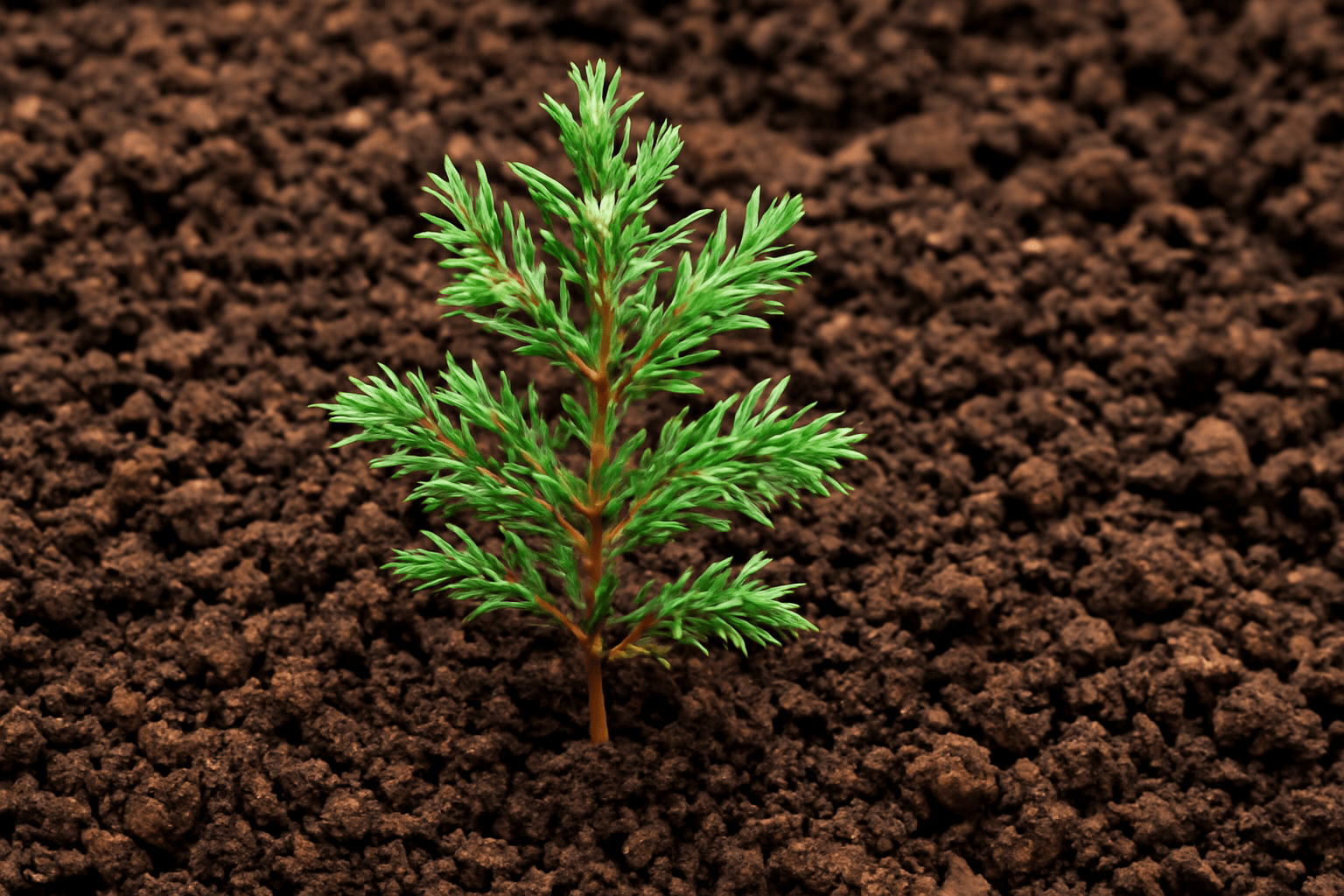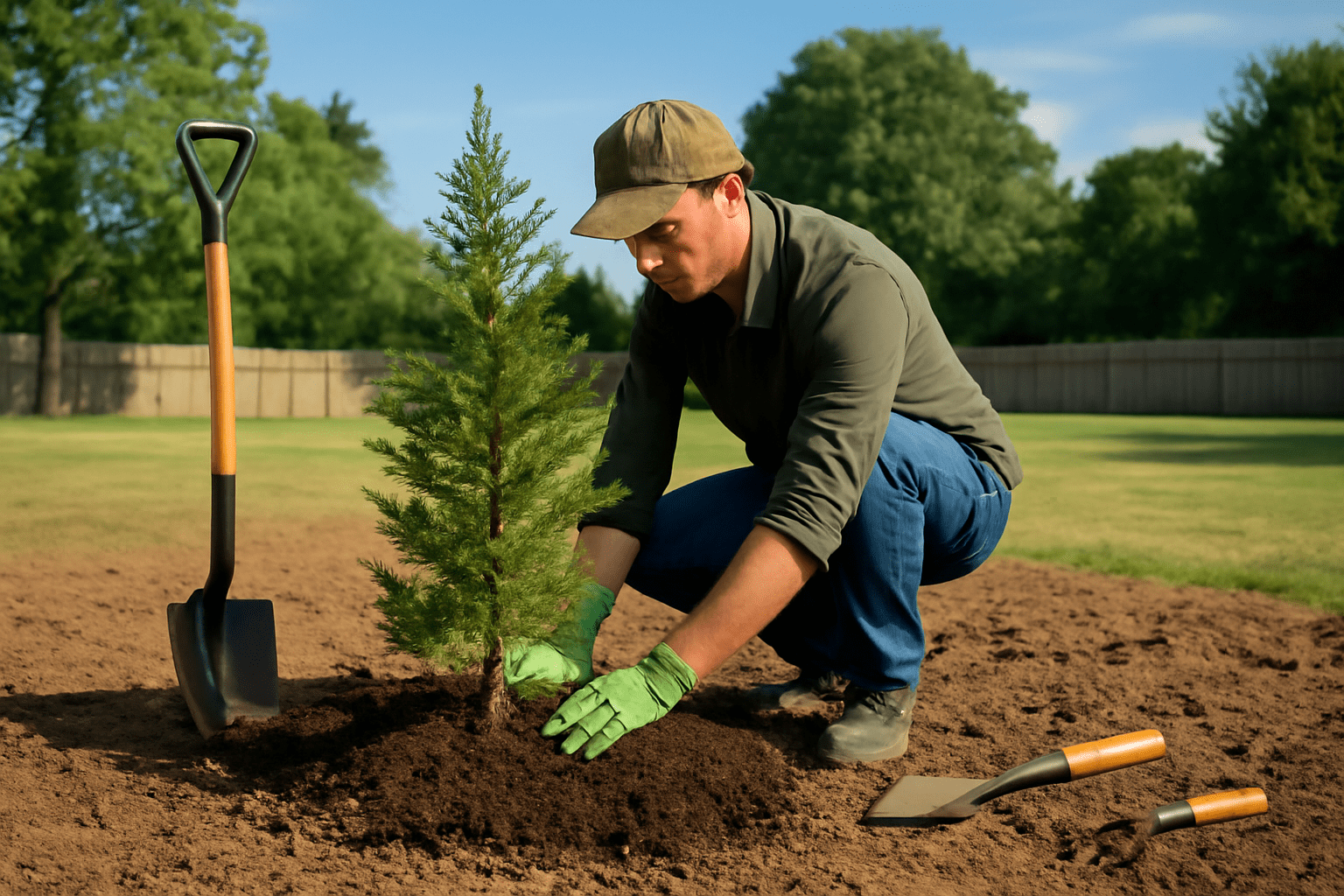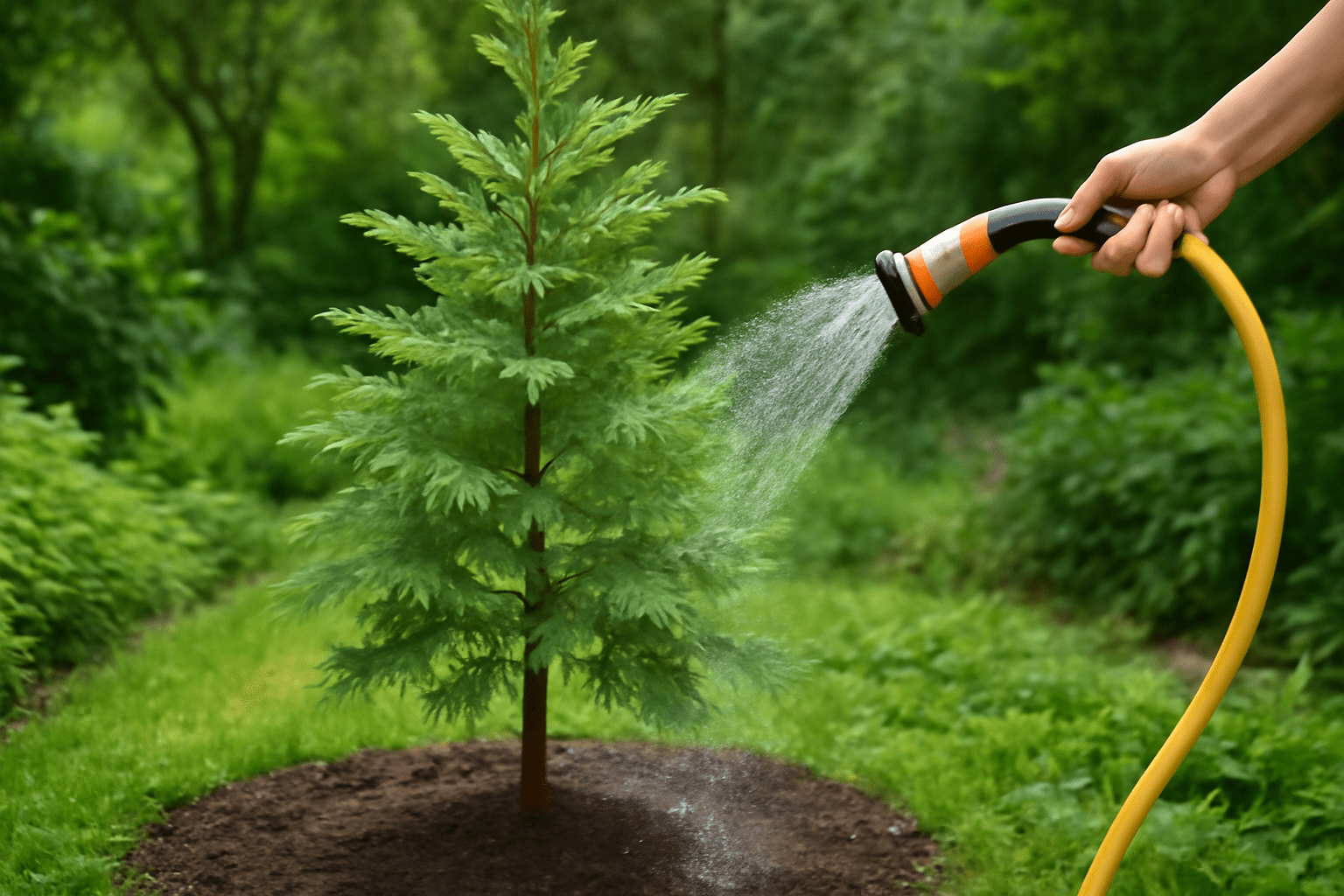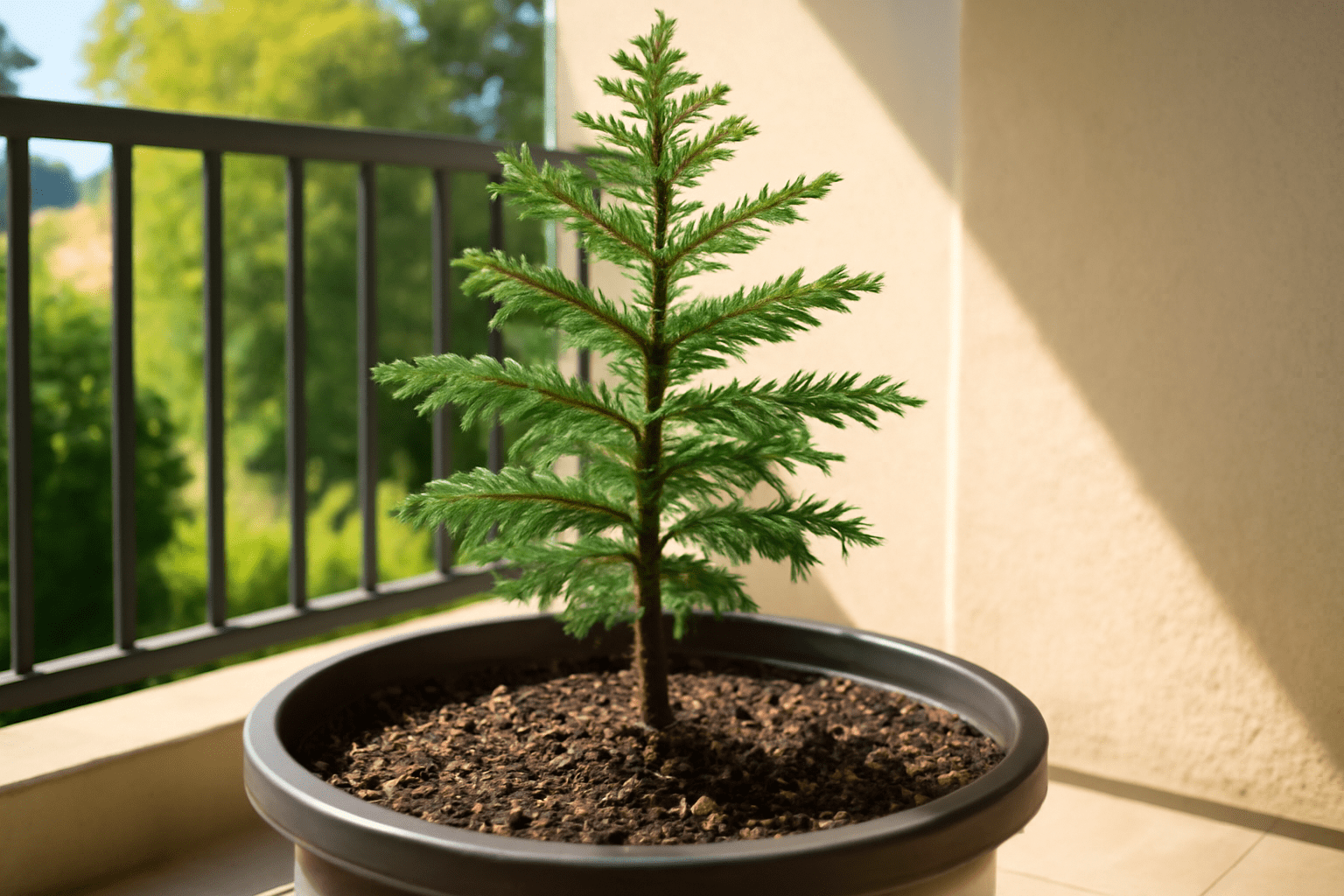
How to Grow a Sequoia Tree: Step-by-Step Guide for Thriving Growth
Imagine having a majestic Sequoia tree standing tall in your backyard, its towering presence adding beauty and character to your landscape 
In this guide, we’ll walk you through how to grow a Sequoia tree, from choosing the right location to caring for it as it matures. Whether you’re looking to add a Sequoia to your garden or embarking on the exciting challenge of nurturing a future giant, we’ve got you covered with easy-to-follow, expert-backed tips. Keep reading to unlock the secrets to growing a healthy, thriving Sequoia tree in your own space!
Table of Contents
ToggleUnderstanding Sequoia Trees 
Sequoia trees are truly remarkable giants of the plant world. Native to California, these majestic trees are known for their towering heights and long lifespan. Sequoias can live for thousands of years, growing up to 300 feet tall, making them some of the tallest and oldest living organisms on Earth!
What Makes Sequoia Trees Special?
Sequoias are part of the cypress family, and their bark is incredibly thick, often more than a foot in some areas. This thick bark helps protect them from fire, pests, and the elements, allowing them to thrive in challenging conditions. The leaves are needle-like and spiral along the branches, contributing to the tree’s evergreen nature.
Ideal Growing Conditions 
Sequoias are not just any trees; they thrive in specific environmental conditions:
- Climate: They prefer cooler, temperate climates, making them ideal for coastal regions but also adaptable to high-altitude areas.
- Soil: Well-drained, loamy soil is perfect for sequoias. They can tolerate slightly acidic to neutral soil but prefer moisture-rich environments.
- Watering: Although they are drought-tolerant once mature, young sequoias need plenty of water to grow strong and healthy.

By understanding these key aspects, you’ll be better equipped to plant and care for your sequoia tree, ensuring it grows to its full potential.
Growth Speed and Size 


When it comes to growth, Sequoia trees are fast growers—especially in their early years. In ideal conditions, they can grow up to 3 feet per year! However, as they mature, their growth slows, but their impressive height and girth make them a long-term investment for any garden or landscape.
Knowing these essentials about Sequoia trees will help you prepare to care for them as they grow. Their impressive size, adaptability, and resilience make them an extraordinary addition to your garden, bringing beauty and awe for generations to come!
Preparing to Grow a Sequoia Tree 

Before you plant your Sequoia tree, it’s important to lay the groundwork for success. These majestic trees can grow into towering giants, so taking the right steps from the start is essential to ensure they thrive. Here’s how you can prepare effectively:
1. Choose the Right Location 
Sequoia trees need plenty of space to grow, so pick a spot that’s both spacious and ideal for sunlight. They thrive in full sun, so ensure your chosen area receives at least 6–8 hours of sunlight daily. The soil should be well-drained—Sequoias don’t like to sit in waterlogged soil. Consider testing your soil’s pH (a slightly acidic to neutral range is best) to ensure optimal growth.

2. Plan for Growth 
Sequoias are among the tallest trees in the world, and they grow fast! Ensure your planting area can accommodate their size. Make sure the area is free from overhead obstructions like power lines or buildings that might hinder their growth. Keep in mind that Sequoias can grow over 3 feet per year in their early stages!
3. Prepare the Soil 
Before planting, it’s a good idea to enrich your soil with compost or organic matter. This will improve soil structure and provide the necessary nutrients for your Sequoia’s early growth. If your soil is heavy clay or sandy, amending it with organic matter will help retain moisture and improve drainage. Adding a slow-release fertilizer will also give your tree a boost!
4. Gather the Right Tools 
For planting, you’ll need a shovel, watering can or hose, and mulch. It’s also helpful to have a measuring tape to ensure you’re planting the tree at the right depth. Keep these tools handy to ensure the planting process is smooth and efficient.
5. Research Local Climate 
Sequoias are native to California’s coastal mountains, but they can grow in a variety of climates as long as they are given proper care. Check your local weather patterns to ensure your region’s winters aren’t too harsh. If you’re in an area with cold winters, consider starting your Sequoia indoors or using a greenhouse to protect young seedlings until they’re strong enough to withstand the elements.
By preparing your space and soil and gathering the right tools, you’re setting the stage for a healthy and thriving Sequoia tree!
How to Plant a Sequoia Tree from Seed 
Growing a Sequoia tree from seed can be a rewarding experience, but it requires patience and the right steps to ensure success. Follow this beginner-friendly guide to start your own towering beauty from the very beginning.
1. Collect and Prepare Your Seeds 
Sequoia seeds are small, so handling them with care is key. You can gather seeds from a healthy tree or purchase them online. After obtaining the seeds, store them in a cool, dry place until you’re ready to plant.
Tip: To improve germination rates, cold stratify the seeds by placing them in a moist paper towel inside a plastic bag in the fridge for 30 days. This mimics the natural winter conditions Sequoia seeds need to sprout.
2. Choose the Right Planting Container 
Sequoia seedlings need space to grow. Select a container that’s at least 4-6 inches deep and has good drainage holes. A small pot or seed tray works well for starting out.
3. Prepare the Soil 
Sequoias prefer well-draining soil. Use a mix of 50% potting soil and 50% sand or perlite to ensure proper drainage. Fill the container with this mix, leaving about half an inch of space from the top.
4. Plant the Seeds 
Place 2-3 seeds on the soil surface and gently press them into the soil. Don’t bury the seeds—Sequoia seeds need light to germinate. Lightly mist the soil with water to keep it moist but not soggy.

5. Provide Optimal Growing Conditions 
Place the pot in a location with indirect sunlight, ideally in a warm spot between 65-75°F (18-24°C). Consistent moisture is crucial, so keep the soil damp but not soaking.
Tip: A humidity dome or plastic wrap can help retain moisture and create a greenhouse effect. Remove it once the seeds have germinated to avoid mold buildup.
6. Transplant the Seedlings 
Once your seedlings have grown large enough (around 2-3 inches tall), they’re ready to be transplanted into larger pots or directly into the ground. Sequoia trees need plenty of space to grow, so be sure to give them enough room to spread out.
Tip: When transplanting, handle the seedlings gently, as their roots can be delicate. If planting outdoors, ensure the soil is well-draining and the location receives full sunlight.
7. Ongoing Care 
Water your Sequoia regularly, especially during dry spells. Sequoias prefer consistent moisture, but make sure the soil doesn’t become waterlogged. Keep an eye on pests and diseases—healthy trees are less likely to be affected.
As your tree grows, be patient. Sequoias are slow growers at first but can become mighty giants in time!
By following these simple steps, you’ll have your own Sequoia tree thriving from seed in no time. Happy planting!
Caring for Your Sequoia Tree 
Caring for your Sequoia tree is essential to ensure it thrives and reaches its majestic potential. Whether you’re growing a young sapling or an established tree, providing the right care will help your Sequoia grow strong, healthy, and resilient. Here’s a simple guide to keep your tree flourishing:
1. Watering 
Sequoia trees require plenty of water, especially during their early stages. Young trees need consistent watering to establish deep roots. Aim for deep watering once or twice a week, ensuring the soil is moist but not soggy. During dry spells or in summer, increase watering to help the tree cope with the heat. Be mindful not to overwater, as Sequoias are prone to root rot in overly wet conditions.

2. Soil Quality 
Sequoias thrive in well-draining, slightly acidic soil. Before planting, ensure your soil has a pH of 5.5 to 6.5. If the soil is heavy or clayey, amend it with organic compost to improve drainage. Regularly check the soil around your tree for compacting and loosen it as needed to promote healthy root growth.
3. Sunlight 
Plant your Sequoia tree in a location where it will get full sunlight, as these trees love bright, direct sunlight for at least 6–8 hours a day. However, if you live in a region with intense summer heat, a little afternoon shade can help prevent sunburn and protect young trees.
4. Mulching 
A good layer of mulch around your Sequoia can help retain moisture, suppress weeds, and regulate soil temperature. Apply a 2-3 inch layer of organic mulch, such as wood chips or bark, around the base of the tree. Keep the mulch away from the trunk to prevent rot.
5. Pruning 
While Sequoias require minimal pruning, you should remove any dead, damaged, or diseased branches to keep the tree healthy. For younger trees, prune lightly to encourage strong, well-spaced branches. Pruning should be done in late winter or early spring before new growth begins.
6. Fertilizing 
Sequoias are relatively low-maintenance when it comes to fertilization. Use a slow-release, balanced fertilizer in early spring to give the tree a nutrient boost as it comes out of dormancy. Avoid over-fertilizing, as it can cause excessive, weak growth that is vulnerable to pests and disease.
7. Pest and Disease Control 
While Sequoias are generally pest-resistant, they can sometimes attract insects like aphids or scale. Regularly inspect your tree for any signs of pests or disease. If you spot an issue, treat it promptly with organic insecticidal soap or horticultural oil. Additionally, ensure proper airflow around the tree to prevent fungal diseases, especially in humid climates.
By following these simple care guidelines, your Sequoia tree will continue to grow tall and majestic, contributing to a healthy, vibrant landscape.
Sequoia Tree Maintenance Over Time 
Growing a Sequoia tree is an exciting journey, but it does require consistent care to ensure it thrives over the years. While these trees are incredibly resilient, proper maintenance will help them reach their full potential. Here’s how to care for your Sequoia tree as it matures:
1. Watering Routine 
During the first few years, young Sequoia trees need regular watering to establish strong roots. Once established, they are more drought-tolerant, but consistent watering during dry spells is still crucial. Water deeply to encourage deep root growth—especially in the summer months when soil tends to dry out faster.
2. Pruning for Shape 
Sequoia trees naturally grow tall, but pruning helps to maintain their shape and health. Remove dead or damaged branches and any competing leaders to promote strong vertical growth. For optimal results, prune during the dormant season (late winter or early spring), as this minimizes stress to the tree.
3. Fertilizing 
Fertilizing your Sequoia tree isn’t mandatory, but adding a balanced fertilizer can boost its growth. Apply it in the spring when the tree is entering its active growing season. Be sure to use slow-release fertilizer to prevent over-fertilizing, which could damage the roots.
4. Mulching for Moisture Retention 
Mulch is your best friend when it comes to maintaining soil moisture and protecting roots. Apply a thick layer (3–4 inches) of organic mulch around the base of the tree, but avoid piling it directly against the trunk. This will also help suppress weeds and improve soil quality over time.
5. Monitoring for Pests and Diseases 

While Sequoias are generally resistant to pests and diseases, keep an eye out for any signs of trouble. If you notice yellowing leaves or unusual growth, investigate further to rule out fungal infections or pest infestations. Regularly check the bark and branches for signs of insects like aphids or scale.
6. Providing Space to Grow 
As your Sequoia tree matures, it will need ample space to spread out. Avoid planting anything too close to the tree’s base, as this can limit root growth and reduce its ability to thrive. Keep an eye on the surrounding landscape to ensure that the Sequoia’s growth isn’t obstructed by nearby plants or structures.
7. Preparing for Extreme Weather 

Sequoias are hardy, but extreme weather conditions—like harsh winter frosts or summer heatwaves—can stress the tree. To protect young trees, consider wrapping the trunk in burlap during winter to prevent frost damage. For mature trees, ensure they have enough water before extreme heat to avoid dehydration.
8. Encouraging Healthy Growth 
A healthy Sequoia tree is one that’s regularly checked, watered, and free of stress. Over time, the tree will need less frequent care, but regular monitoring of its health and well-being will help you catch potential problems early and keep your Sequoia growing strong.
By following these maintenance tips, your Sequoia tree will flourish and continue to add beauty and value to your garden for many years to come!
Growing Sequoia Trees in Pots or Containers 
Growing a Sequoia tree in a pot or container can be a rewarding experience, especially if you don’t have a lot of space in your garden. While Sequoias are known for their massive size when planted in the ground, growing them in containers allows you to enjoy their beauty in a manageable form. Here’s everything you need to know to successfully grow a Sequoia tree in a pot.
Choosing the Right Container 
The first step is selecting a container large enough to accommodate the tree’s root system. Sequoias grow rapidly, so choose a pot with plenty of depth—at least 18-24 inches deep and 18-24 inches wide. A large pot will provide the roots with enough space to expand and thrive.
Make sure the container has drainage holes at the bottom to prevent waterlogging, which could lead to root rot. Adding a layer of gravel at the bottom will further enhance drainage and help keep the roots healthy.
Soil and Drainage 
Sequoias prefer well-draining, slightly acidic soil. Use a mix that combines potting soil with sand or perlite to ensure proper drainage. This is essential, as soggy soil can suffocate the roots. Ensure the soil is loose and light, allowing air to circulate around the roots.
You can also use a soil mix designed for conifers or evergreen trees, as this will provide the ideal nutrients for your Sequoia.
Watering Requirements 
Watering is crucial to your Sequoia’s success. While young Sequoias in pots need frequent watering, be careful not to overwater. Allow the top inch of soil to dry out between waterings. During hot weather, you may need to water more often. A good rule of thumb is to water deeply until it runs out of the bottom drainage holes.
In winter, reduce watering since the plant’s growth slows down. Ensure the pot is not sitting in water, as this can cause root rot.
Sunlight and Temperature 

Sequoias thrive in full sun, so place your container in a location where it gets at least 6-8 hours of sunlight each day. However, if you’re growing your Sequoia in a very hot climate, it’s best to provide some afternoon shade to protect it from intense heat.
During colder months, bring the pot inside or place it in a sheltered area to protect it from frost. Sequoias in containers are more vulnerable to temperature fluctuations than those in the ground, so take extra care to protect the roots.

Pruning and Maintenance 
While Sequoias are low-maintenance, pruning will help maintain their shape and encourage strong growth. Remove any dead or damaged branches regularly to ensure the tree stays healthy. In addition, if your Sequoia becomes top-heavy or begins to outgrow its pot, it’s time to repot it into a larger container.
Also, consider adding slow-release fertilizer to the soil during the growing season to provide your Sequoia with the necessary nutrients. Just be cautious not to over-fertilize, as this can harm the tree.
Repotting Your Sequoia 
As your Sequoia grows, it will outgrow its container. Plan to repot your tree every 2-3 years, or when you notice the roots starting to become crowded. Select a pot that is 2-4 inches larger in diameter than the current one. This will give the roots room to grow without overwhelming them.
By following these simple tips, you’ll create an environment where your Sequoia tree can thrive in a container. With proper care, you can enjoy this magnificent tree in any space, no matter how small!
Troubleshooting Common Problems 
Growing a Sequoia tree can be a rewarding experience, but like any plant, it can come with its challenges. Here’s a guide to help you troubleshoot and solve some common issues you may encounter while caring for your Sequoia tree.
1. Yellowing Leaves 
Yellowing leaves can signal a few potential issues, like nutrient deficiencies or overwatering.
- Solution: Check if the soil is soggy—Sequoias don’t like standing water. Ensure that the tree is in well-draining soil. If it’s a nutrient issue, consider adding a balanced fertilizer with micronutrients. Nitrogen deficiency can cause yellowing, so look for a fertilizer that’s rich in nitrogen!
2. Slow Growth 
Sequoia trees are known for their rapid growth, but sometimes they can seem slow to mature.
- Solution: Make sure your tree is getting plenty of sunlight
—at least 6 hours a day. If planted in a shady spot, consider moving it to a sunnier location. Also, Sequoias need regular watering, especially when young, but avoid overwatering. If the soil is compacted, aerating it can help promote better root growth.
3. Pest Infestations 
Sequoias are relatively pest-resistant, but they can still fall prey to aphids, scale insects, and mites.
- Solution: Inspect the tree regularly for signs of pests (like sticky residue or small webs). If you spot pests, you can treat them with insecticidal soap or neem oil. For severe infestations, prune away affected areas to keep the tree healthy.
4. Root Rot 
Root rot occurs when the tree’s roots are exposed to excessive moisture, which can suffocate them.
- Solution: Ensure that your Sequoia tree is planted in well-drained soil and avoid standing water around the base. If you suspect root rot, carefully remove the tree from the soil, trim off any rotting roots, and replant it in fresh, dry soil. Adding mulch around the base can help retain moisture without keeping the roots too wet.
5. Browning Tips of Leaves 
If you notice the tips of the Sequoia tree’s leaves turning brown, it could be due to several factors, such as heat stress or salt buildup.
- Solution: Make sure the tree is in a location where it’s not exposed to extreme temperatures or direct winds. If you’ve used fertilizer recently, check for salt buildup in the soil, which can dry out the roots. Flushing the soil with water can help alleviate this. Ensure you’re watering the tree deeply, rather than shallow watering.
6. Tree Not Growing Tall 
Sequoias are known for their towering height, but in some cases, they may not grow as tall as expected.
- Solution: Ensure the tree has enough space for its roots to spread. If it’s planted in a confined space, its growth may be restricted. Also, remember that young Sequoia trees can take time to establish themselves before reaching their full height potential, so don’t be discouraged if the growth is slow in the first few years.
With these troubleshooting tips, you’ll be able to identify and solve the most common issues with your Sequoia tree and enjoy watching it thrive!
Sequoia Tree Growth Milestones 
Growing a Sequoia tree is a rewarding process that takes time, but with patience and care, you’ll see your tree thrive. Here’s a breakdown of the key growth milestones you can expect as your Sequoia matures.

1. Germination (0-1 Year) 
In the first year, the focus is on germination. Sequoia seeds can take a few weeks to sprout after planting. During this time, ensure the soil remains consistently moist but not waterlogged. Keeping the seedling in a sunny spot will encourage strong growth.
2. Seedling Stage (1-3 Years) 
Once germinated, your Sequoia will enter its seedling stage. During this period, the tree will grow slowly. You’ll notice small, needle-like leaves beginning to develop. It’s essential to protect the young tree from pests and ensure it’s not competing with larger plants for nutrients.
3. Early Growth (3-10 Years) 
From the third to tenth year, your Sequoia will begin to grow more rapidly. The trunk starts to thicken, and the tree’s height will increase noticeably. By now, it’s crucial to ensure your tree gets enough water and nutrients, especially in dry periods.
4. Establishment (10-20 Years) 
During this phase, your Sequoia’s growth will begin to stabilize, though it will still grow quite fast. The tree will start to branch out, and its roots will become firmly established in the ground. Regular pruning of dead or weak branches can encourage healthier growth.
5. Mature Growth (20+ Years) 
By the time your Sequoia is 20 years old, it will be well on its way to reaching its full height, potentially surpassing 100 feet in some cases. At this stage, the tree will continue to grow at a steady pace, reaching its impressive full size.
Pro Tip: Keep in mind that Sequoia trees can live for thousands of years, so once they reach maturity, they’ll continue to be a remarkable presence in your landscape for generations to come.
By understanding these key milestones, you’ll be able to care for your Sequoia effectively and watch it grow into a towering beauty. 
Conclusion
Growing a Sequoia tree is a rewarding, long-term investment in nature’s beauty and strength. While it requires patience and care, the process of nurturing this majestic tree from a small seedling to a towering giant is both fulfilling and awe-inspiring. By following the steps outlined in this guide—choosing the right location, planting properly, providing consistent care, and addressing any challenges along the way—you’re setting the stage for a healthy, thriving Sequoia.

Remember, Sequoia trees grow at their own pace, and with the right attention, they’ll reward you with years of growth, beauty, and environmental benefits 
Frequently Asked Questions(FAQ)
How long does it take for a Sequoia tree to grow to full height?
A Sequoia tree can grow up to 3 feet per year in ideal conditions, but it may take 50-100 years to reach its full mature height, which can exceed 200 feet. Patience is key when growing these towering giants.
Can I grow a Sequoia tree in a pot?
Yes, you can grow a Sequoia tree in a pot, but it requires a large container to accommodate its root system. Be sure to provide ample sunlight, good drainage, and consistent care for the tree to thrive.
What’s the best time to plant a Sequoia tree?
The best time to plant a Sequoia tree is in early spring or fall when the weather is cooler. Avoid planting during the hot summer months or when there’s frost, as extreme temperatures can stress the young tree.
How often should I water my Sequoia tree?
Water your Sequoia tree deeply and regularly, especially in dry periods. A good rule of thumb is to water once a week, ensuring the soil stays moist but not waterlogged. Adjust watering frequency depending on rainfall and season.
What soil is best for a Sequoia tree?
Sequoia trees prefer well-draining, slightly acidic to neutral soil. If your soil is too heavy or clayey, consider amending it with organic compost to improve drainage and nutrient content.
How can I protect my Sequoia tree from pests?
Sequoia trees are generally resistant to pests, but you should still monitor for common issues like aphids or spider mites. Natural pest control methods, such as introducing beneficial insects or using insecticidal soap, can help keep pests in check.
How much space does a Sequoia tree need to grow?
Sequoia trees need a lot of space to grow, both above and below ground. Plant your tree at least 15-20 feet away from structures, fences, or other trees to allow for root expansion and healthy growth.
Why are the leaves of my Sequoia tree turning brown?
Brown leaves on a Sequoia tree may indicate environmental stress, such as underwatering, heat, or poor soil drainage. Make sure the tree gets sufficient water, especially in dry weather, and check for any signs of root rot or disease.



